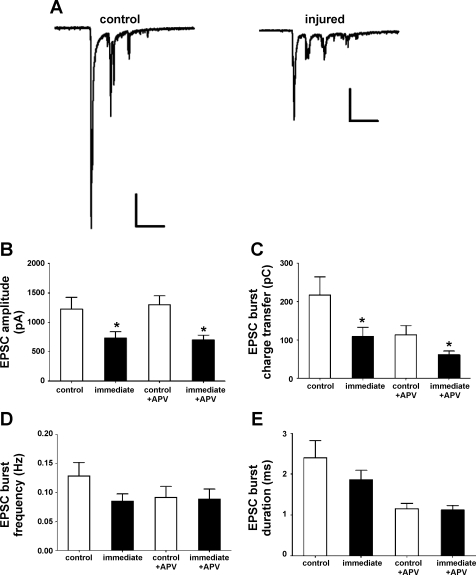Fig. 5.
Injury reduces spontaneous excitatory postsynaptic currents (sEPSC) amplitude and charge transfer. A: examples of bursts of sEPSCs in a control and injured neuron immediately post injury. Scale bars, 200 pA, 0.5 s. B: injury reduced the maximal amplitude of sEPSC bursts immediately post-injury (732.4 ± 107.7 pA, n = 12) vs. control (1228.0 ± 196.8 pA, n = 14, *P < 0.05). The maximal amplitude of AMPAR-mediated sEPSC bursts, recorded in the presence of APV, was also reduced (701.6 ± 81.6 pA for injured neurons vs. 1302.1 ± 148.5 pA for control, P < 0.05). C: injury reduced the charge transfer during sEPSC bursts immediately post-injury in the absence of APV (109.3 ± 23.9 pC for injured vs. 217.4 ± 47.1 pC for control, P < 0.05) and in the presence of APV (61.4 ± 9.8 pC for injured vs. 114.1 ± 24.1 pC, P < 0.05). D: sEPSC burst frequency recorded from neurons immediately post-injury in either the presence or absence of APV did not differ from control neurons (P > 0.05). E: sEPSC burst duration recorded from neurons immediately post-injury in either the presence or absence of APV did not differ from control neurons (P > 0.05).

